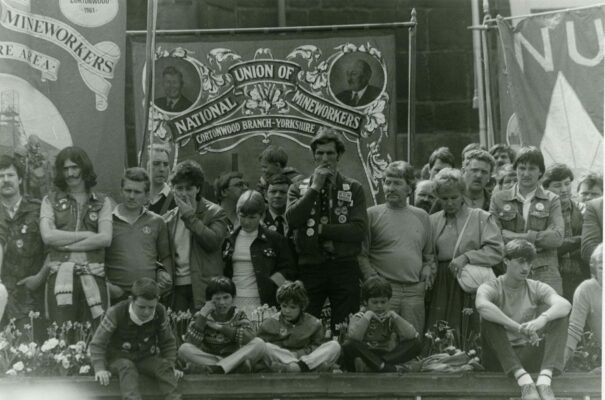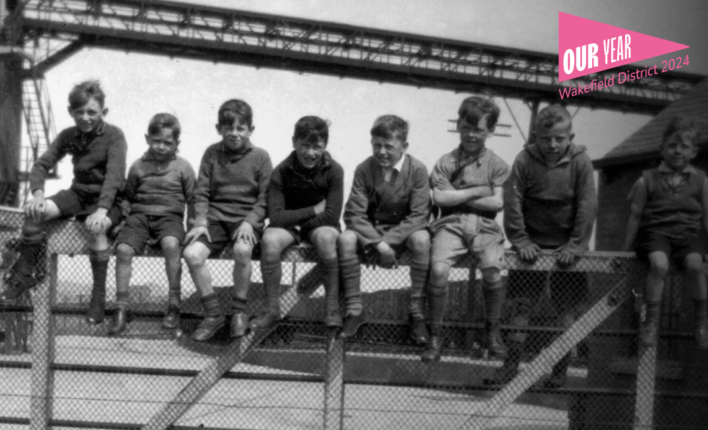
Free event

As part of Our Year – Wakefield District 2024, Our heritage, Our Stories connects us to our past, preserving traditions, stories, and cultural legacies that shape our identities. During March we are celebrating our mining heritage with a series of events and activities. Keep scrolling to read more from Lynn Dunning, CEO National Coal Mining Museums for England, about Wakefield’s mining heritage.
As the new CEO of the National Coal Mining Museum for England, and with 2024 marking the 40th Anniversary of the Miners’ Strike, it’s an interesting and important time to reflect upon the impact of our coal mining heritage in Wakefield.
I’ve always had a passion for industrial heritage, working previously in museums in Barnsley for 20 years, and before that in the industrial powerhouses of Liverpool, Barrow-in-Furness and Dundee.
The ingenuity and innovation of the men and women who worked in and around industry, before, during and after the Industrial Revolution, has always been a rich source of fascination and inspiration for me.
Wakefield, which has now been my home for five years, is of course one of many places across England with a rich coal mining heritage. That has helped to foster a strong sense of identity, pride and community spirit. The legacy of coal mining, and the closure of the pits, is still evident in many ways – socially, culturally and economically.
Nature has reclaimed many former colliery sites, creating habitats rich in biodiversity where people go to enjoy fresh air, walk their dogs and spend time with their families, as I love to do, exploring places such as Anglers Country Park, Walton Colliery Nature Park, Betty Eastwood Park and Lofthouse Colliery Nature Park. The potential to generate energy from minewater is also becoming a reality.

Minewater treatment lagoons at Hope Pit looking towards Caphouse

Steam Winding House, Caphouse Colliery
Coal mining in Wakefield started as early as Roman times and centuries later the Monks of Nostell Priory mined near Crofton. But, like many places, it was only with the Industrial Revolution, particularly in the 19th century, when villages and countryside were transformed, deep collieries sunk, and a network of canals cut, and waggonways and railways built, to transport coal.
The Industrial Revolution also transformed our way of life. Britain led the world in the production of coal. As George Orwell wrote in 1937, ‘’Our civilization… is founded on coal, more completely than one realises until one stops to think about it. The machines that keep us alive, and the machines that make machines, are all directly or indirectly dependent upon coal.’’
At its peak, 1 in 20 men in the UK were employed in the mining industry. Wakefield became one of the most important coalfields in England. At one time there were over 40 coal mines operating across our district and in the late 1940s, the National Coal Board was the largest employer in Wakefield.
Hundreds of other Wakefield businesses relied on the industry. These included Alfred Ellis, manufacturer of safety lamps, British Jeffrey Diamond, who produced mining equipment, and Bradley & Craven, who built winding engines. In each village and town, local shops, pubs and a myriad of other businesses prospered around the mining industry too.
Great engineers and scientists worked in our district to improve safety in the mines. They included Sir William Garforth, who carried out research at Altofts into coal dust explosions, a common cause of deaths underground.
Some mine owners such as Henry Briggs built housing and chapels for their workers. The National Coal Board continued this tradition, replacing poor quality housing including at Townville. Educational institutions such as the Whitwood Mining and Technical College in Castleford trained each generation of mining engineers.
The coal industry had the most powerful unions in the country. Strikes, including in 1926, the 1970s and in 1984/85, had the potential to bring the country to a standstill – such was the need for coal. There were 174 working collieries in the UK on the eve of the strike in 1984/85. In 2015, the very last deep colliery in Yorkshire and the country, Kellingley, was closed.
Today of course there are no major working coal mines in England. But, at the National Coal Mining Museum for England here in Wakefield, you can experience life underground as well as exploring the stories of mining communities, the science and technology of mining and much more.
The museum is located at Caphouse Colliery, on the western edge of the Yorkshire coalfield. A plan dated 1791 reveals its early workings, including a shaft on the Caphouse site.
Before 1827 the colliery was owned by the Milnes family. It then passed into the ownership of the Lister Kaye family until 1907. A fascinating character in the history of our colliery was Emma Lister Kaye, who inherited the site from her father in 1875.
Under Emma’s leadership, the colliery developed an ambitious plan to increase production and was redeveloped extensively, including sinking a new colliery named the Prince of Wales Colliery. Emma had a new winding engine installed too. The beautiful house built for it still bears her initials, ELK, today.
The colliery passed into the hands of a new company in 1907, had a series of managers between the wars, and then, on 1st January 1947, became part of the new National Coal Board. In the words of Prime Minister Clement Attlee, ‘The coal mines now belong to the nation.’
Mining continued here until the mid-1980s and in 1988, the Yorkshire Mining Museum opened at Caphouse Colliery. We were granted ‘national status’ in 1995, becoming the National Coal Mining Museum for England.

Getting ready to go underground at the National Coal Mining Museum for England

Women against pit closures during the 84/85 strike, copyright Ken Wilkinson
We share stories of impassioned strikes, the tragedies, the dark impact of closures, whilst also inspiring young generations with proud stories of bravery, engineering and incredible innovation, and how we can all work together to create a greener future.
Our latest exhibition 84/85 – The Longest Year (Wednesday 6 March 2024 – Monday 3 March 2025), focuses on the memories of those who lived through the Strike that year. It explores the experiences of those who went on strike, those who went back to work before the strike was over, and those who didn’t strike. It’s a powerful first-hand account of the impact of the period on the men, their families and communities across England.
“We supported one miner and his family, as much as we could, after he told us they had eaten their pet rabbit. I am still shocked about this 40 years later.”
“There was one old guy come through the picket lines and they literally smashed his car to bits. His windscreen, the lot, and this bloke was like nearly sixty and he never worked again.’’
“He kept a pickaxe handle under the bed at night for protection… I remember telling the support group that we were going to live with my parents for Xmas which was a lie because I was afraid to say he had gone back to work.”
The exhibition is accompanied by a year long programme of public events including the Youth Arts Festival, Brass Band Season, poetry readings and workshops, film shows and more.
You can find out more about paying us a visit at www.ncm.org.uk and if you are interested in doing your own coal mining heritage research our library is free to use.
